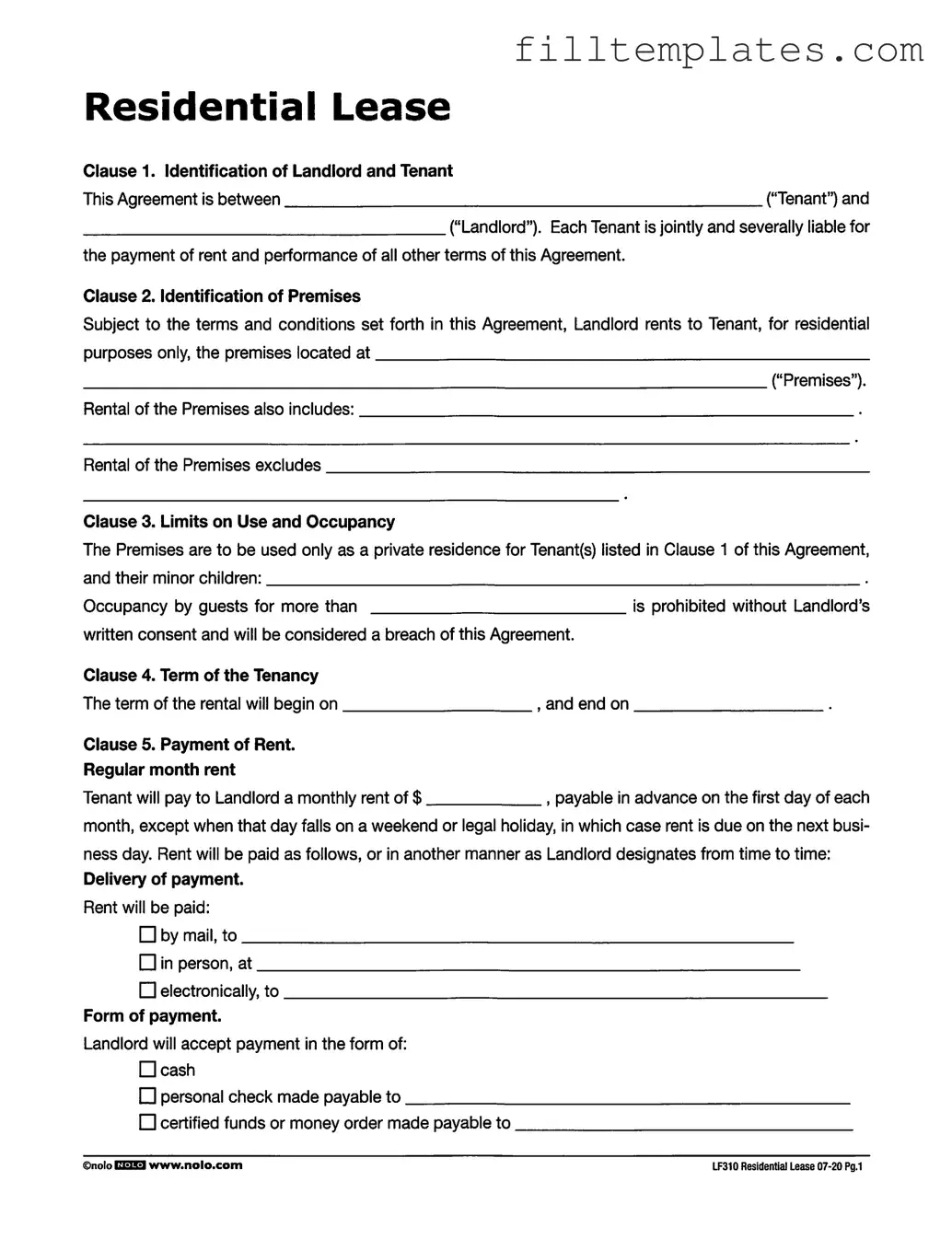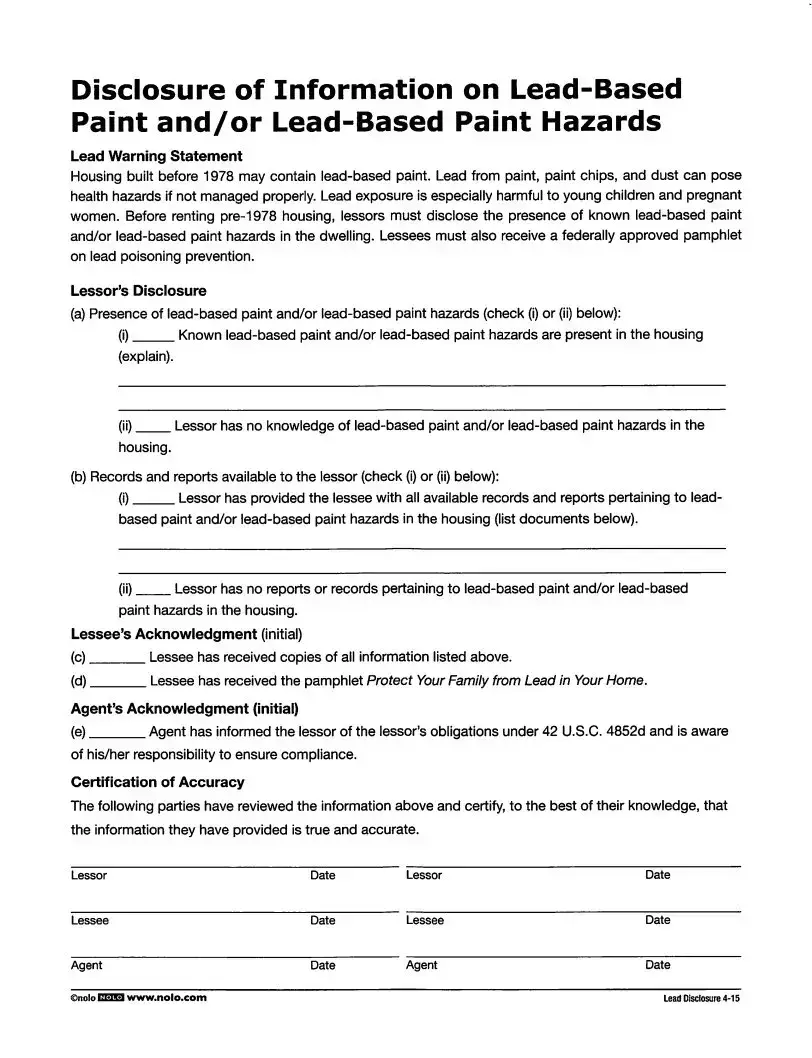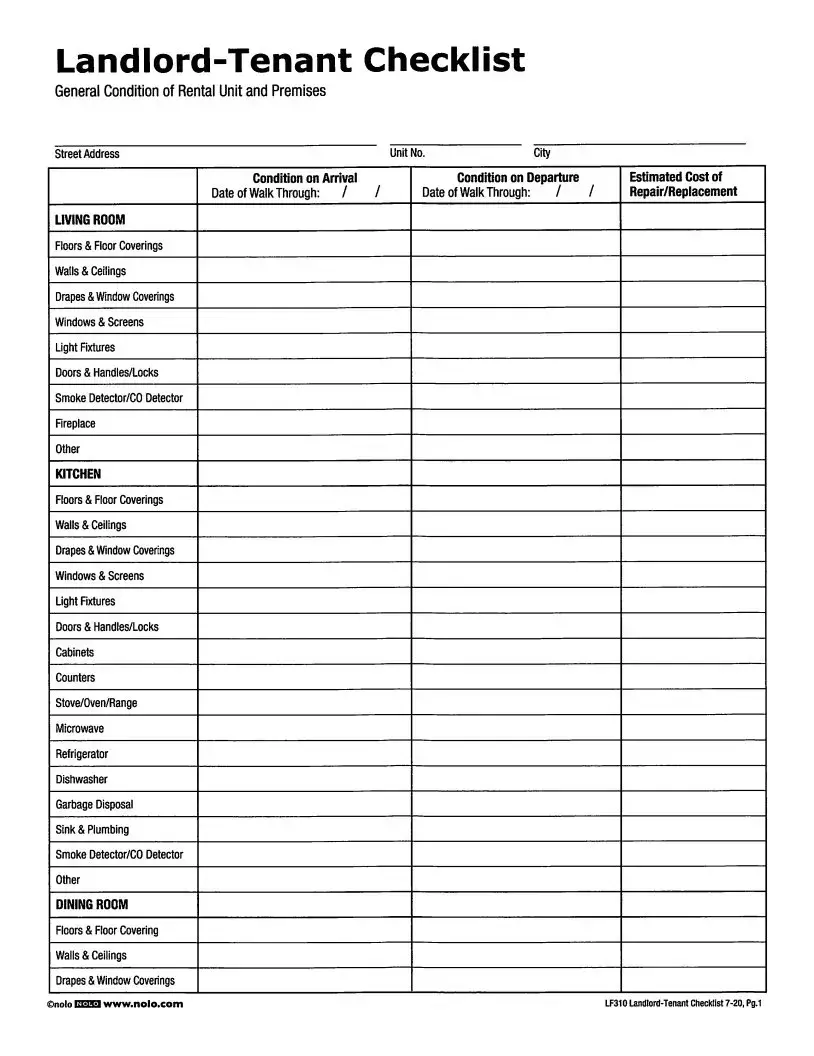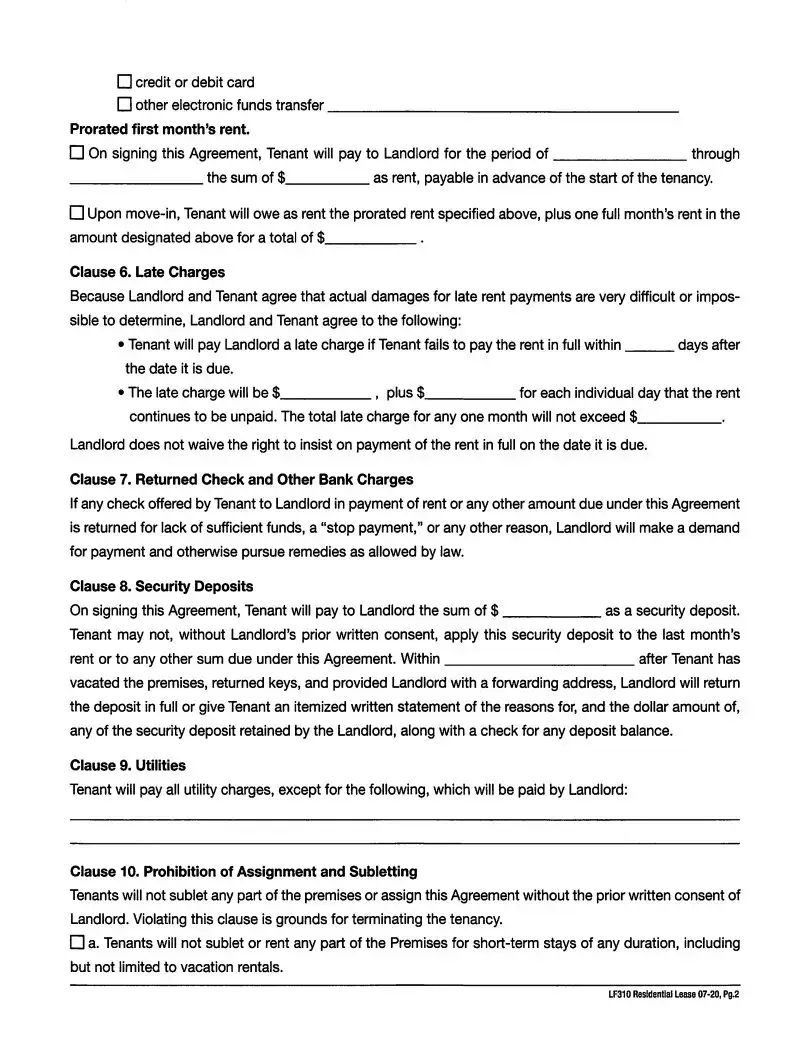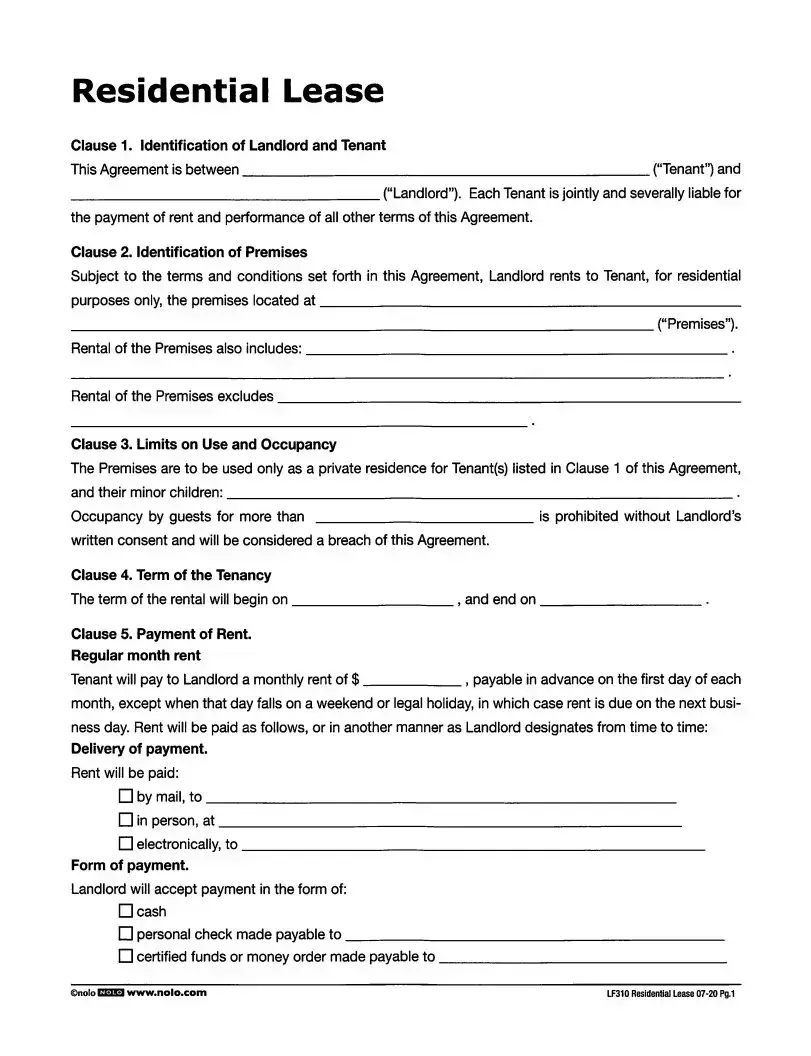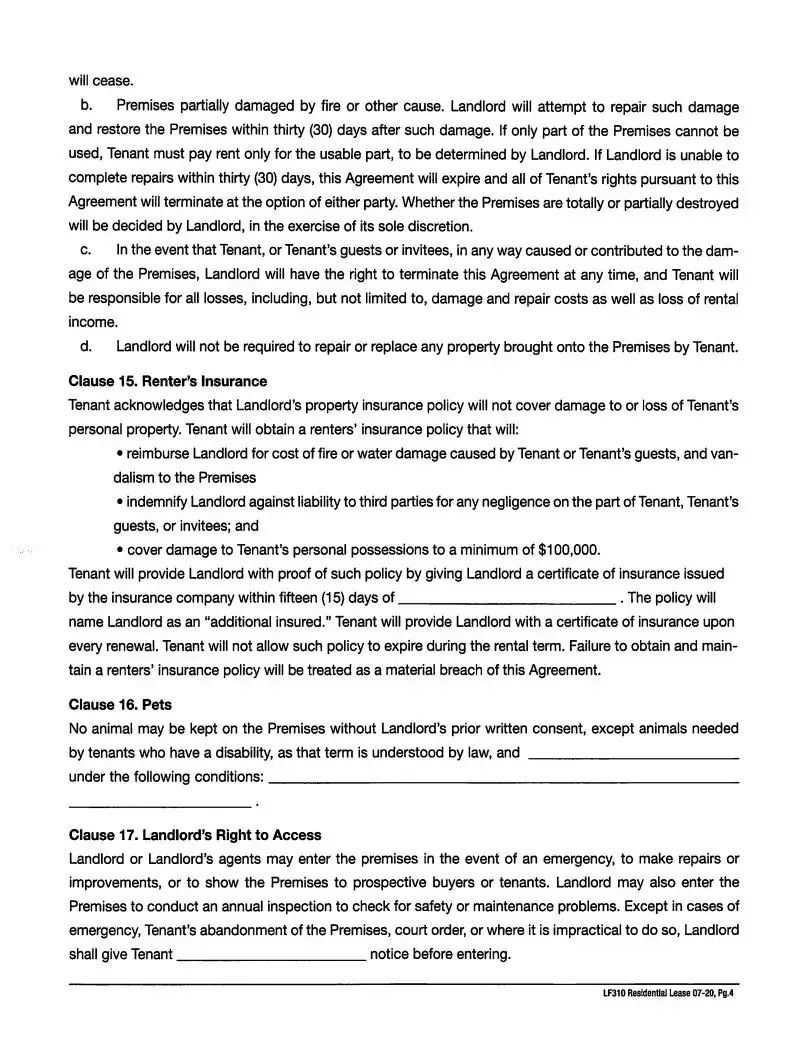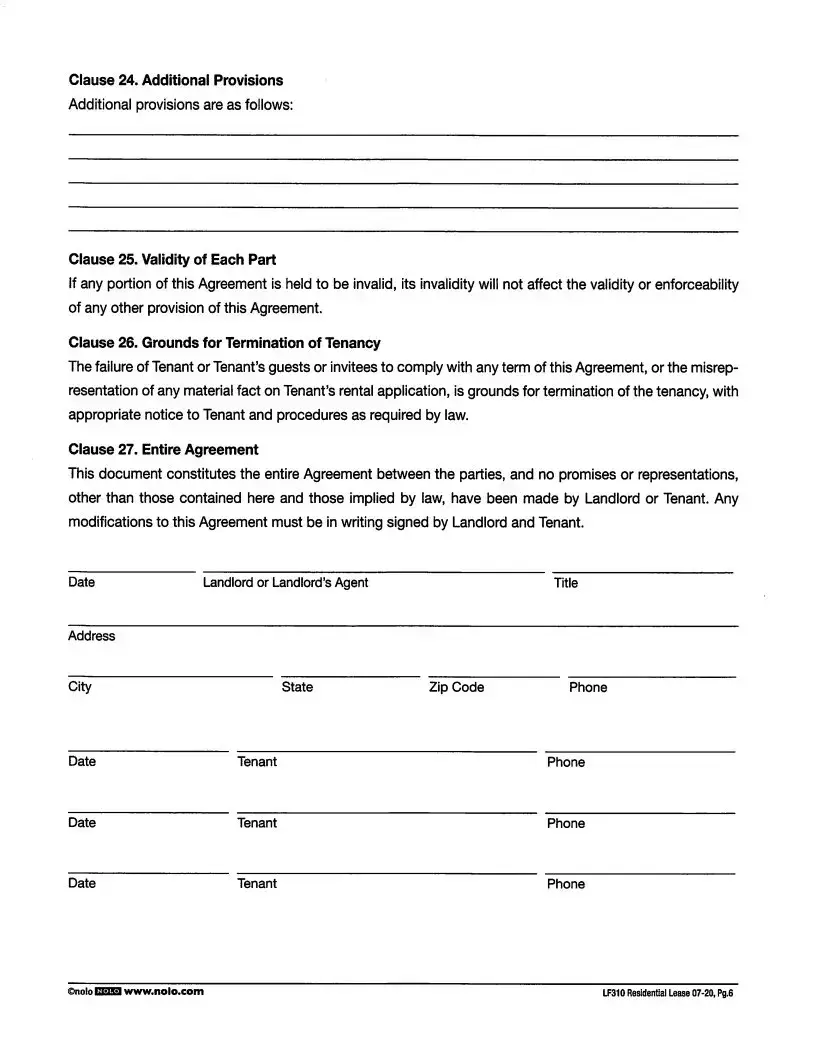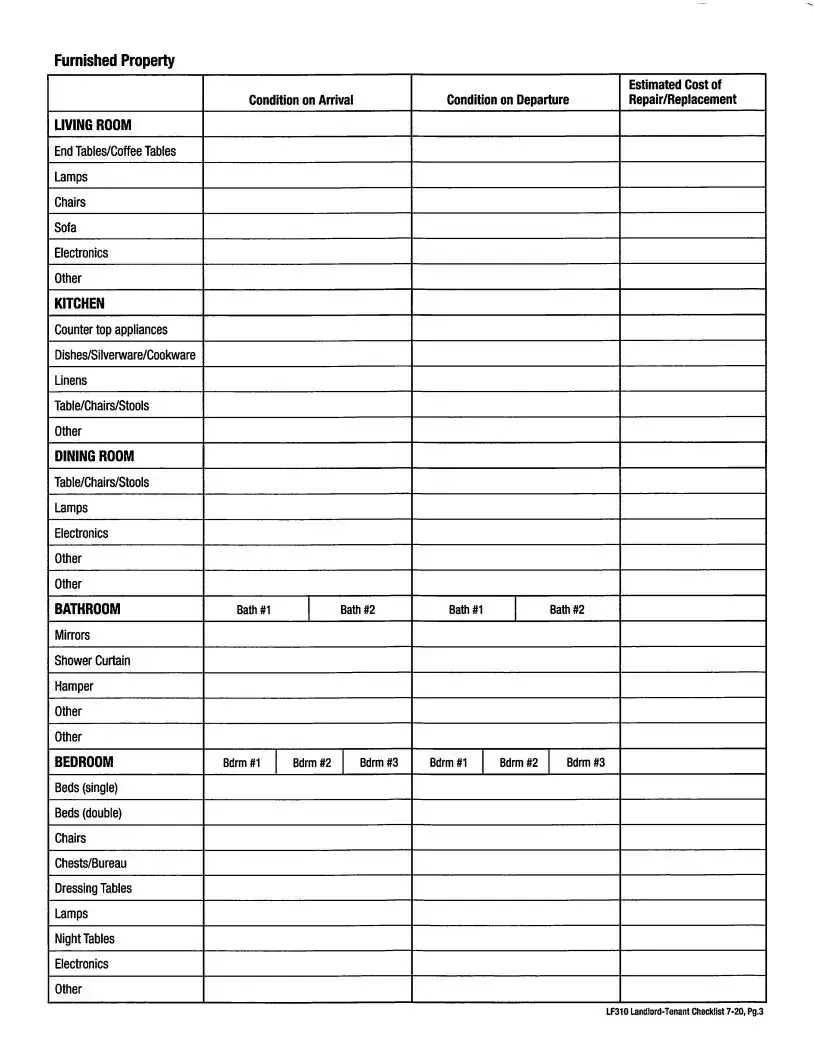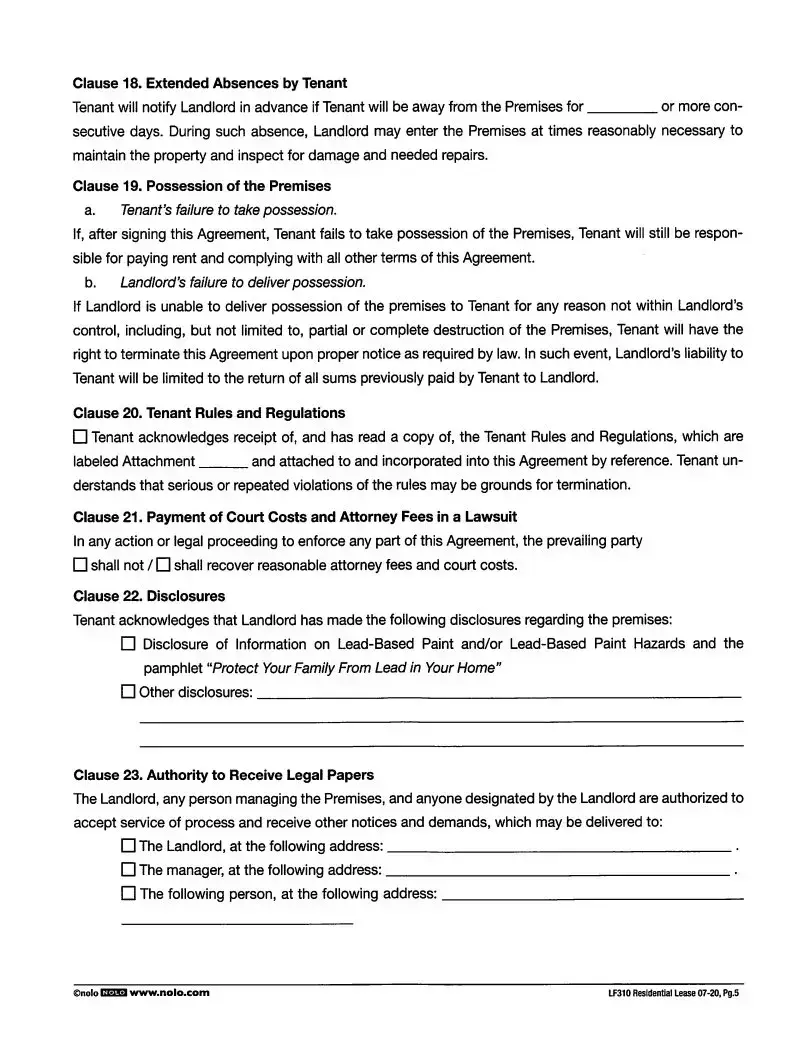The Lf310 Residential Lease form is a comprehensive document that outlines the relationship between landlords and tenants, ensuring clarity and mutual understanding. It begins with the identification of both parties, clearly stating who the landlord and tenant are, and emphasizes that each tenant is responsible for fulfilling the lease terms. The form specifies the premises being rented, detailing its intended use solely as a private residence for the tenants and their minor children. Additionally, it sets boundaries on occupancy, prohibiting guests from overstaying without consent, which helps maintain the integrity of the rental agreement. The lease also defines the rental term, starting and ending dates, and stipulates the payment structure, including monthly rent amounts, due dates, and acceptable payment methods. Late charges are addressed, providing a clear framework for penalties if rent is not paid on time, while also outlining procedures for returned checks. Security deposits are covered, detailing the amount required, conditions for its return, and the timeline for such returns after the tenant vacates the premises. Utilities responsibilities are also clarified, indicating which charges the tenant must cover and which the landlord will handle. Lastly, the form includes a prohibition against subletting or assigning the lease without written consent, reinforcing the importance of maintaining control over the rental property. This lease form is designed to protect the interests of both parties while fostering a respectful and legally sound rental relationship.
